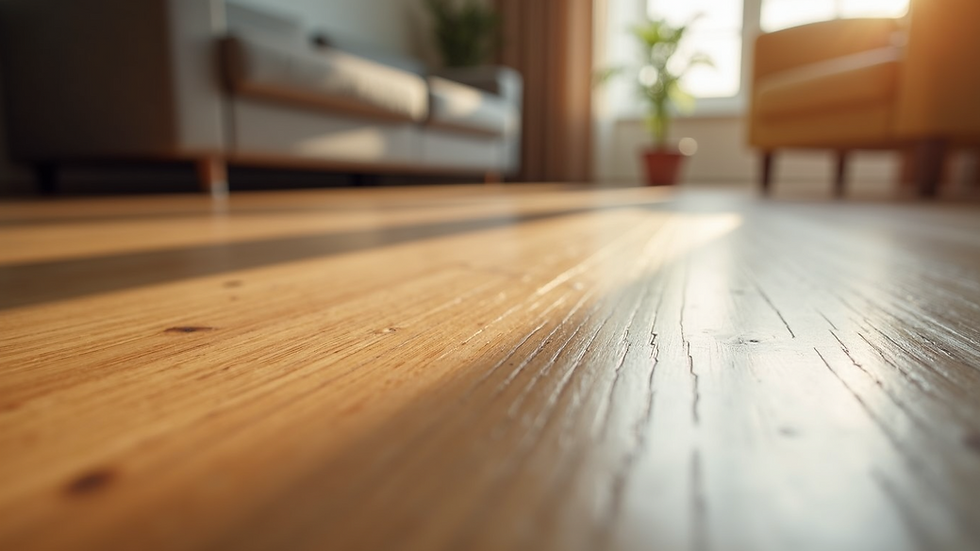Manufacturer Warranty Coverage: What You Need to Know
- jpwow23
- Sep 6
- 3 min read
When investing in flooring, understanding the flooring warranty benefits is crucial. A warranty protects your purchase and gives you peace of mind. However, many people find warranty terms confusing or overlook them entirely. This guide will help you navigate the essentials of manufacturer warranties, what they cover, and how to make the most of them.

Hardwood flooring showcasing natural grain and finish
Why Flooring Warranty Benefits Matter
Flooring is a significant investment, and the right warranty can save you money and hassle in the long run. Warranties typically cover defects in materials or workmanship, but the scope and duration vary widely. Knowing the flooring warranty benefits helps you:
Avoid unexpected repair or replacement costs
Understand what damages or issues are covered
Make informed decisions when choosing flooring products
Ensure proper maintenance to keep the warranty valid
For example, some warranties cover wear and tear for 10 years, while others might only cover manufacturing defects for 5 years. Some warranties exclude damage caused by improper installation or accidents. Reading the fine print is essential.

Flooring samples arranged for customer selection
What is a Warranty for a Manufacturer?
A manufacturer warranty is a promise from the company that made the product. It guarantees that the flooring will perform as advertised for a specific period. If the product fails due to manufacturing defects, the manufacturer will repair or replace it.
Key points about manufacturer warranties include:
Coverage Scope: Usually limited to defects in materials or workmanship, not damage from misuse or accidents.
Duration: Can range from a few years to a lifetime, depending on the product.
Transferability: Some warranties transfer to new owners if you sell your home; others do not.
Claim Process: Typically requires proof of purchase and may involve inspection.
Understanding these details helps you know when and how to file a claim if needed.

Flooring being installed by professionals
Common Types of Flooring Warranties
There are several types of warranties you might encounter:
Wear Warranty
Covers surface wear through normal use. For example, if the finish wears off prematurely, the warranty may cover refinishing or replacement.
Structural Warranty
Covers issues like warping, buckling, or delamination caused by manufacturing defects.
Stain and Fade Warranty
Protects against discoloration from sunlight or household stains.
Installation Warranty
Sometimes offered by the installer, covering errors during installation rather than the product itself.
Each warranty type has specific terms and conditions. For instance, a wear warranty might require regular cleaning with approved products to remain valid.
How to Maximize Your Manufacturer Warranty Coverage
To get the most from your warranty, follow these practical tips:
Keep Your Receipt and Documentation
Always save your purchase receipt and warranty paperwork. These are essential for any claims.
Follow Maintenance Guidelines
Use recommended cleaning products and methods. Avoid harsh chemicals or abrasive tools.
Inspect Flooring Regularly
Catch issues early and report them promptly to the manufacturer or installer.
Use Professional Installation
Many warranties require professional installation to be valid.
Register Your Warranty
Some manufacturers require you to register your product online to activate the warranty.
By adhering to these steps, you protect your investment and ensure your warranty remains valid.
What to Do If You Need to File a Warranty Claim
If you notice a problem covered by your warranty, act quickly:
Review the Warranty Terms
Confirm the issue is covered and check the claim process.
Gather Documentation
Collect your receipt, warranty card, photos of the damage, and any maintenance records.
Contact the Manufacturer or Retailer
Reach out to the company where you purchased the flooring or directly to the manufacturer.
Follow Instructions
They may require an inspection or additional information.
Keep Records of Communication
Document all correspondence for reference.
Remember, some warranties have time limits for filing claims, so don’t delay.
Understanding Manufacturer Warranty Coverage
When purchasing flooring, it’s important to understand the manufacturer warranty coverage offered. This coverage protects you against defects and ensures you receive a quality product. Always read the warranty details carefully and ask questions if anything is unclear.
By knowing your rights and responsibilities under the warranty, you can avoid surprises and enjoy your flooring for years to come.
By understanding the ins and outs of flooring warranties, you can make smarter choices and protect your investment. Whether you are buying hardwood, laminate, vinyl, or tile, knowing the flooring warranty benefits and how to use them will save you time, money, and stress. Take the time to read warranty documents, maintain your floors properly, and keep all records safe. This knowledge empowers you to enjoy beautiful, durable flooring with confidence.






Comments